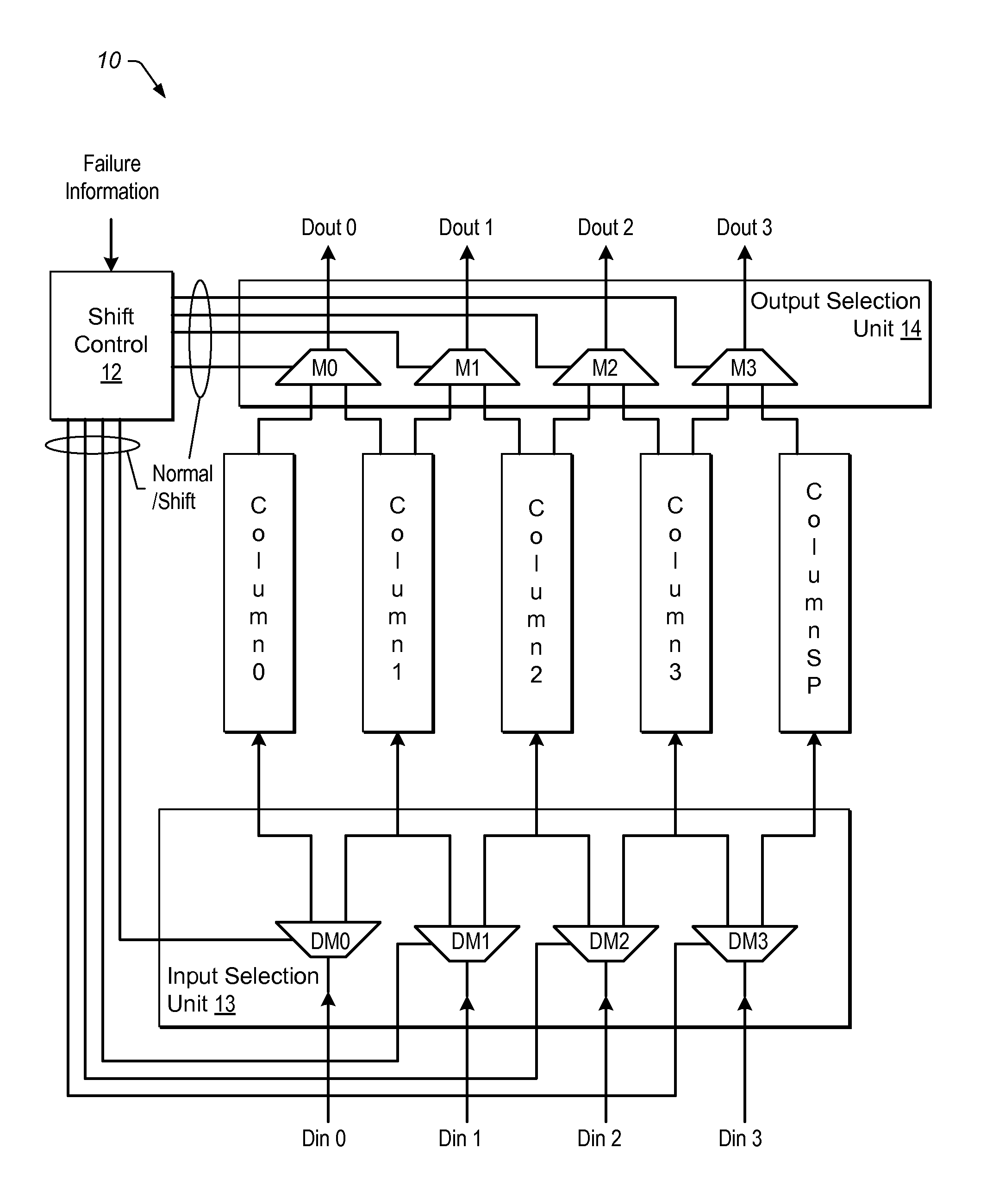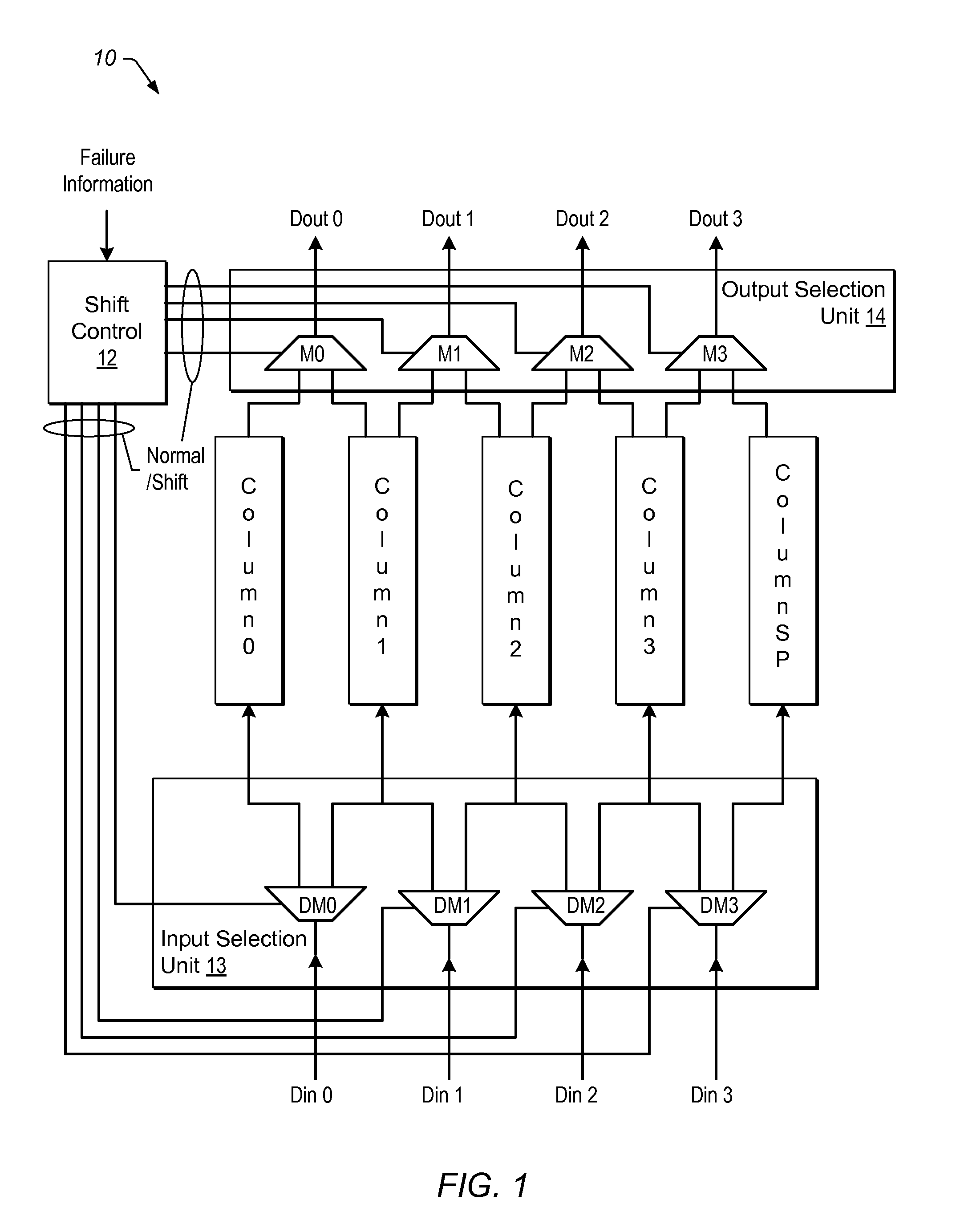Reduced latency memory column redundancy repair
a memory column and redundancy repair technology, applied in the field of memory circuit repair, can solve the problems of increased number of defects introduced during manufacturing, reduced cost of redundant logic, and additional delays that may sometimes be introduced to the memory critical path, so as to reduce output latency and reduce redundancy repair the effect of latency and preserving balanced sense amplifier output loading
- Summary
- Abstract
- Description
- Claims
- Application Information
AI Technical Summary
Benefits of technology
Problems solved by technology
Method used
Image
Examples
Embodiment Construction
[0006]Various embodiments of a mechanism for implementing a reduced latency memory column redundancy repair are disclosed. Broadly speaking, a mechanism for repairing memory columns includes reducing output latency by using both outputs of a sense amplifier and selecting one of the outputs based upon repair information. Many conventional memory circuits use a differential sense amplifier that is connected in a single-ended configuration in which only one of the sense amplifier outputs is used. To preserve balanced sense amplifier output loading, the unused sense amplifier output is typically connected to one or more dummy devices having a capacitive load that is similar to the output that is being used. Accordingly, by recognizing that since there are already components connected to the unused output, the unused output for each column may be used with very little area penalty. Selection logic may select which of the sense amplifier outputs to use based upon whether or not that colum...
PUM
 Login to View More
Login to View More Abstract
Description
Claims
Application Information
 Login to View More
Login to View More - R&D
- Intellectual Property
- Life Sciences
- Materials
- Tech Scout
- Unparalleled Data Quality
- Higher Quality Content
- 60% Fewer Hallucinations
Browse by: Latest US Patents, China's latest patents, Technical Efficacy Thesaurus, Application Domain, Technology Topic, Popular Technical Reports.
© 2025 PatSnap. All rights reserved.Legal|Privacy policy|Modern Slavery Act Transparency Statement|Sitemap|About US| Contact US: help@patsnap.com



